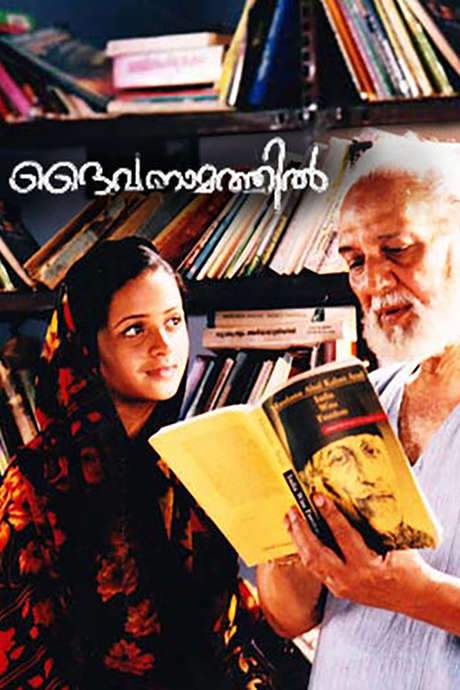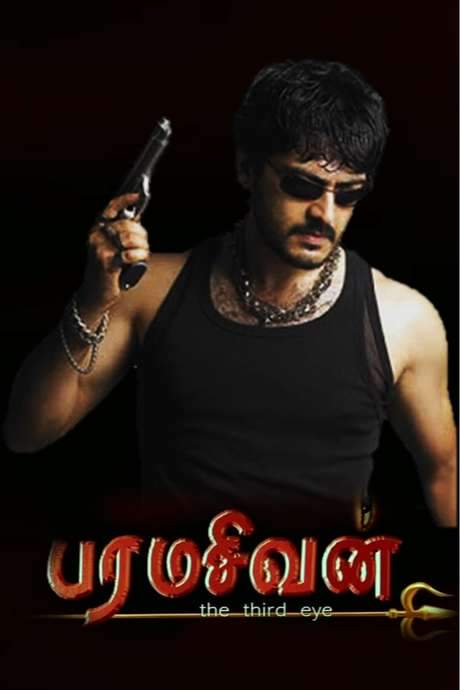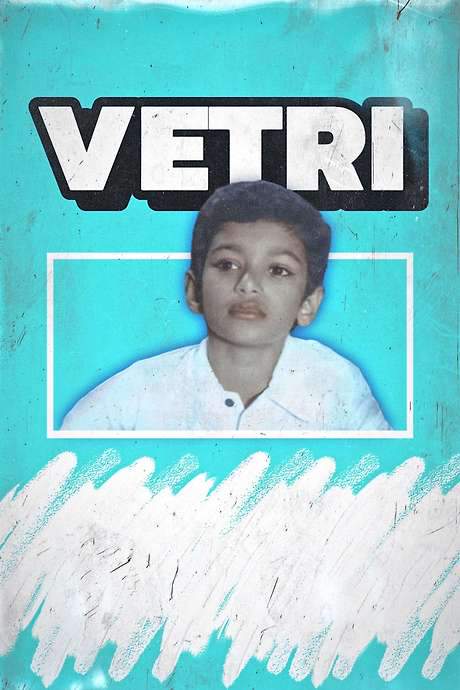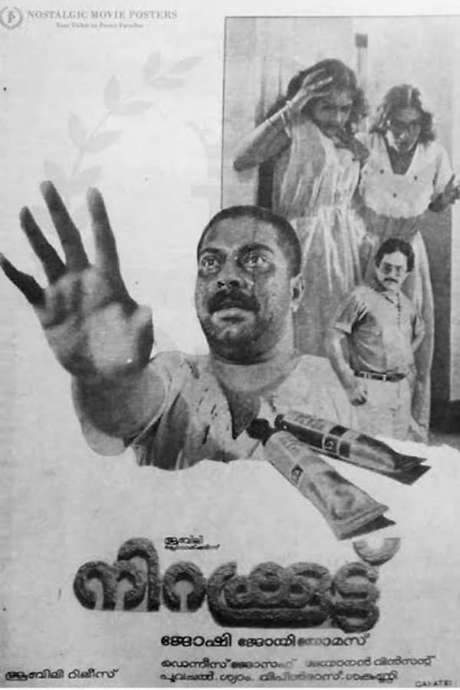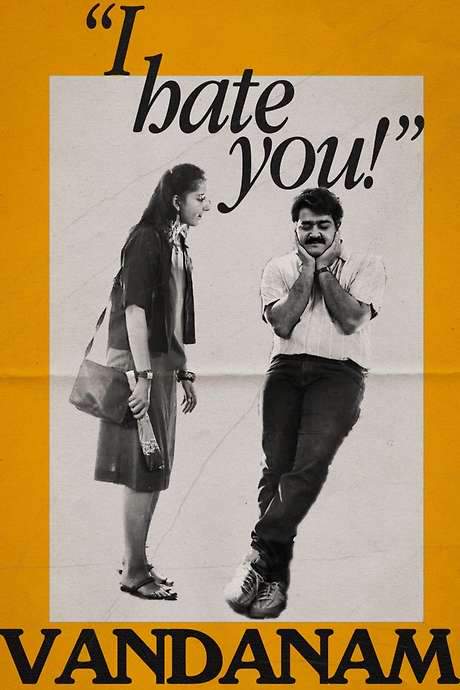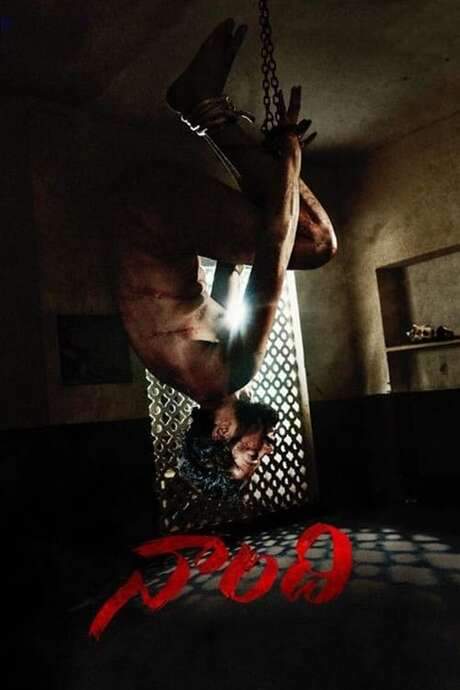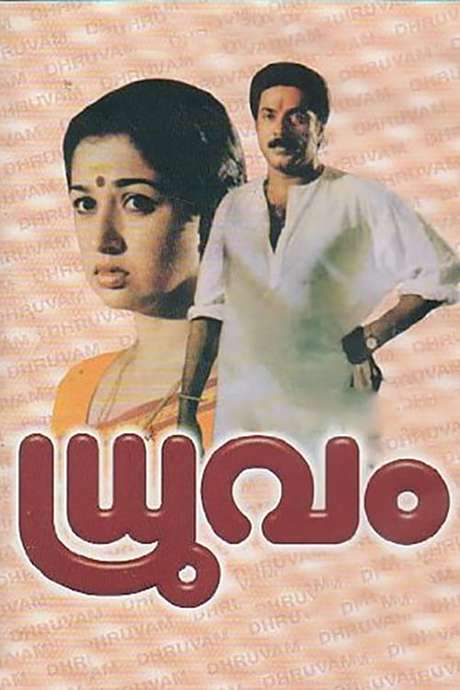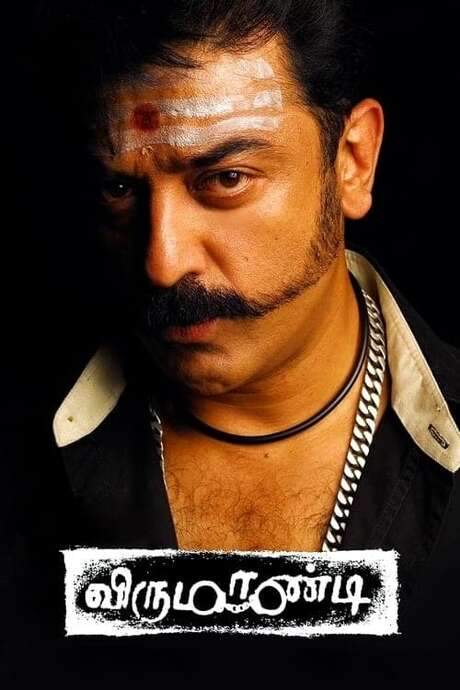
Virumaandi
Year: 2004
Runtime: 175 mins
Language: Tamil
Angela, a civil rights advocate, films a documentary on the death penalty inside Madras Central Prison. She interviews two inmates—Virumaandi, sentenced to death, and Kothaala, serving life—for their role in a clash that killed 24 villagers. As prison tensions rise, each tells a starkly different version, exposing the complexities of justice and humanity.
Warning: spoilers below!
Haven’t seen Virumaandi yet? This summary contains major spoilers. Bookmark the page, watch the movie, and come back for the full breakdown. If you're ready, scroll on and relive the story!
Virumaandi (2004) – Full Plot Summary & Ending Explained
Read the complete plot breakdown of Virumaandi (2004), including all key story events, major twists, and the ending explained in detail. Discover what really happened—and what it all means.
Angela Kathamuthu, a civil rights activist, travels into Madras Central Prison with her cameraman to interview prisoners who are serving life terms or facing the death sentence as part of her PhD study on law and the death penalty. On her first day inside, she records the prisoners’ thoughts and feelings about justice, mercy, and the harsh realities of imprisonment, painting a careful picture of their perspectives and the human stories behind each case. The conversations are intimate, sometimes hopeful, sometimes bleak, and they plant the seed for a larger question about whether punishment truly achieves its stated aims.
Before she leaves, a death-row convict named Narayanan covertly reveals to her a troubling rumor: the prison is entangled in immoral practices, including Drug trafficking, led by Chief Jailer Jayanth and his network. This shocking tip plants the seed for a broader investigation that will collide with Angela’s academic pursuit and blur the line between truth-telling and danger within the system she is studying.
On her second day inside, a sit-in protest erupts among inmates and staff, protesting the sudden death of Narayanan by cardiac arrest and demanding accountability. During the turmoil, Angela meets Kothaala Thevar, a formidable figure serving a double life sentence for his alleged role in the murder of twenty-four people in Theni district. He offers his own version of the events that shaped his conviction, inviting Angela to reconsider the spin of the story through the lens of those who have lived it from the inside.
According to Kothaala Thevar, the trouble at the heart of the conflict traces back to Virumaandi Thevar, a volatile yet charismatic farmer with a deep love for the land and a knack for getting into trouble. Virumaandi’s early life is marked by upheaval: he loses his mother at a young age, is sent away to Chennai and then Singapore by his father, and returns to his village in Chinna Kolarupatti after his father’s death. He re-enters life there as a farmer who becomes entangled with Virumaandi’s land and water rights, circling the tension around a fertile plot coveted by Nayakkar and others who see opportunity in its bounty.
Virumaandi Thevar forms a bond with his distant relative Kothaala Thevar while attempting to protect and preserve the land that is tied to the community’s livelihood. Annalakshmi, the woman who will capture his heart, falls in love with him as they share moments of humor, courage, and resilience. When a funeral for Virumaandi’s grandmother becomes a flashpoint, a bid for his land is offered by the local authorities, and Virumaandi refuses, choosing dignity and independence over a quick payoff.
A violent turn follows: an assassination attempt on Virumaandi during a festival tests his resolve. Annalakshmi steps in, helping to shelter and protect him, and a romance deepens between them. Yet the truth becomes murky as Virumaandi discovers that the murder attempt might be tied to the very power struggles that Kothaala Thevar has orchestrated. In the wake of violent confrontations, Virumaandi is compelled to testify in a village dispute to prevent a bloodbath, a decision that later haunts him as he bears responsibility for the violence that ensues.
A fierce confrontation in Nayakkar’s village leads to a massacre of twenty-six people, with Virumaandi attempting to shield innocents and paying a heavy price for his honesty. For this, he is condemned to a sequence of punishments: a multi-year sentence that escalates to a death sentence after his testimony against the gang. As the courtroom processes unfold, Virumaandi’s life becomes a tangle of truth, manipulation, and the weight of what counts as justice in a system designed to deliver verdicts under pressure.
Within the claustrophobic walls of the prison, Angela presses for the truth behind the charges, seeking to understand the layers of evidence that have shaped Virumaandi’s fate. Her own motive deepens as she shares the personal pain of watching her father be harmed by cruel circumstances and the way the law can fail to shield the vulnerable. Her perspective sharpens the conversation about death, forgiveness, and the possibility of mercy.
As Virumaandi’s story unfolds, we glimpse the core of his character: a man who sometimes acts on impulse but who also embodies a fierce sense of responsibility, honor, and love. He forms a fragile, transformative bond with Annalakshmi, who teaches him about apology and forgiveness, and who helps him see that true justice may require more than punishment. The couple’s relationship threads through the escalating conflicts—land struggles, family loyalties, village politics, and the relentless pressure of survival.
The tale spirals to a dramatic crescendo as Angela gathers evidence to challenge the death sentence and the broader system of punishment. A revolt among jail staff erupts, and Jayanth is wounded, while Virumaandi helps protect Angela and preserve crucial evidence against the drug-running network. In a tense confrontation, Virumaandi faces Kothaala in a volatile clash where loyalties are tested and the line between vengeance and justice grows razor-thin. Kothaala’s grip on power appears to falter as his own henchmen suffer the consequences of Virumaandi’s restraint, and the truth about who killed whom begins to surface in the heat of the melee.
In the courtroom, the evidence points in multiple directions as Virumaandi’s guilt is reassessed. He is convicted of the rapes, the larger murder plot, and the seismic events that led to twenty-six deaths, while also becoming a key witness against Kothaala’s gang. The circuit of justice, vengeance, and the possibility of clemency becomes the central question for everyone involved: can a harsh sentence be tempered by mercy, and does restoring a sense of humanity within the system ever truly mend the harm that has been done?
As the drama accelerates toward its conclusion, Angela’s relentless pursuit of truth yields a pivotal revelation: a documentary-like record of conversations and covert footage that implicates several jail wardens in the drug trade. With Jayanth’s future uncertain, the film questions the extent to which justice is served when corruption, fear, and power co-mingle in the shadows of a high-stakes legal system. Virumaandi, meanwhile, finds himself at a crossroads, torn between the possibility of a final, public reckoning and the quieter, more difficult path of mercy and restraint.
In the end, Angela files for clemency before the President, arguing that the six-year sentence already reflects enough punishment and that Virumaandi should be allowed to live freely, if only to seek a form of repair or retribution that aligns with a broader sense of justice. On television, Virumaandi himself pleads for a rapid resolution—whether that means death by hanging or living out a quieter life as a man consumed by the consequences of his choices. The story closes on a somber, morally complex note, inviting viewers to ponder whether the law can ever fully capture the nuance of human life, and whether true justice might lie somewhere beyond the letter of the statute.
Last Updated: October 09, 2025 at 16:51
Unlock the Full Story of Virumaandi
Don't stop at just watching — explore Virumaandi in full detail. From the complete plot summary and scene-by-scene timeline to character breakdowns, thematic analysis, and a deep dive into the ending — every page helps you truly understand what Virumaandi is all about. Plus, discover what's next after the movie.
Virumaandi Timeline
Track the full timeline of Virumaandi with every major event arranged chronologically. Perfect for decoding non-linear storytelling, flashbacks, or parallel narratives with a clear scene-by-scene breakdown.

Characters, Settings & Themes in Virumaandi
Discover the characters, locations, and core themes that shape Virumaandi. Get insights into symbolic elements, setting significance, and deeper narrative meaning — ideal for thematic analysis and movie breakdowns.

Similar Movies to Virumaandi
Discover movies like Virumaandi that share similar genres, themes, and storytelling elements. Whether you’re drawn to the atmosphere, character arcs, or plot structure, these curated recommendations will help you explore more films you’ll love.
Explore More About Movie Virumaandi
Virumaandi (2004) Scene-by-Scene Movie Timeline
Virumaandi (2004) Movie Characters, Themes & Settings
Virumaandi (2004) Spoiler-Free Summary & Key Flow
Movies Like Virumaandi – Similar Titles You’ll Enjoy
Daivanamathil (2005) Complete Plot Breakdown
Paramasivan (2006) Story Summary & Characters
Vetri (1984) Plot Summary & Ending Explained
Naan Sigappu Manithan (1985) Movie Recap & Themes
Nirakkoottu (1985) Film Overview & Timeline
Vandanam (1989) Spoiler-Packed Plot Recap
Naandhi (2021) Detailed Story Recap
Viruman (2022) Spoiler-Packed Plot Recap
Deva (1995) Full Summary & Key Details
Sadayam (1992) Ending Explained & Film Insights
Sadhu Miranda (2008) Movie Recap & Themes
Dhruvam (1993) Plot Summary & Ending Explained
Vairam (2009) Complete Plot Breakdown
Pallavur Devanarayanan (1999) Detailed Story Recap
Indian (1996) Story Summary & Characters



